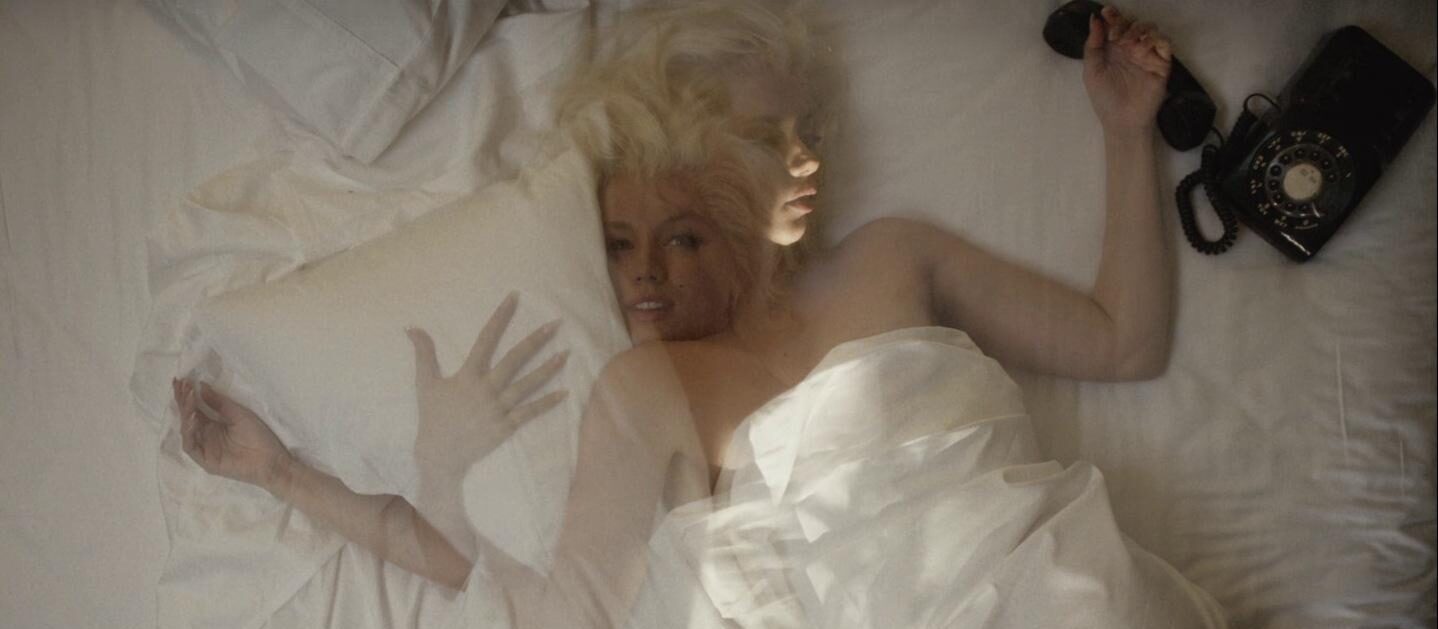

“The soul does not always show in the face, I suppose.”
The main problem with Blonde is not that it strips Marilyn Monroe (Ana de Armas) of her agency, or that it fails to engage with her artistry, or that it doesn’t capture the ebullience and wit that endeared her to the world, or that it doesn’t pass the Bechdel test, or that it struggles to find a balance between commenting on exploitation and indulging in it, or that its abrasive style (which includes among its elements superimposition; high contrast lighting; out-of-focus photography, digital manipulations that stretch bodies, smear faces, and enlarge mouths; arbitrary shifts between black-and-white and color; myriad changes in aspect ratio; fourth wall breaks; associative editing; expressionistic blurring of reality and fantasy, acting and being, past and present; non-linear storytelling; a camera placed in the bowl of an airplane toilet onto which the star of the film repeatedly spews vomit; another one placed inside of her womb as doctors perform an abortion; and still another that is carefully placed to depict oral sex without actually showing much beyond the actress’s face) is somewhat discordant—all of those things are pretty much true, but they’re not the real problem (if they’re problems at all)—no, the primary issue is that Andrew Dominik’s harrowing adaptation of Joyce Carol Oates’ fictional biography offers a brutal high concept version of the life of one of Hollywood’s most enduring icons, attempting to slip behind the legend and put us “inside” the abused, frenzied, and oft-drug-addled mind of Norma Jeane through sheer filmic technique—to depict her life as a perpetual hell; an allegorical procession of depraved manipulations by powerful men, with verified factual details serving only as suggestive signposts—rather than convey the story of her life and death and overpowering alter ego via a bog-standard biopic or find some less offensive middle ground, which means that it neither reinforces popular/romantic notions nor suggests any deep insights but instead repurposes the tainted highlights and horrifying lowlights of the starlet’s tumultuous career to create a willfully distinctive and severe picture about the hidden hardships of female celebrity that is ultimately hard to categorize as anything but a tedious, superficial, and finally numbing assemblage shocking vignettes—a bold and clearly intentional but also self-aware approach that amounts to an uncomfortable cinematic endurance test that asks the viewer to give themselves over completely to its radical impulses only to spit them out at the end with relief from the assault as their most palpable reward. But even that is beating around the bush. At root, all the hullabaloo surrounding Blonde stems from the fact that it’s an NC-17 film made by a notoriously difficult director (read: a niche product) that was released on one of the largest streaming services in the world and concerns an iconic figure whose life has been ingrained in the popular consciousness. Methinks it ended up with a much wider audience than it would have generated organically, and much of that audience was not looking for such a challenging work.